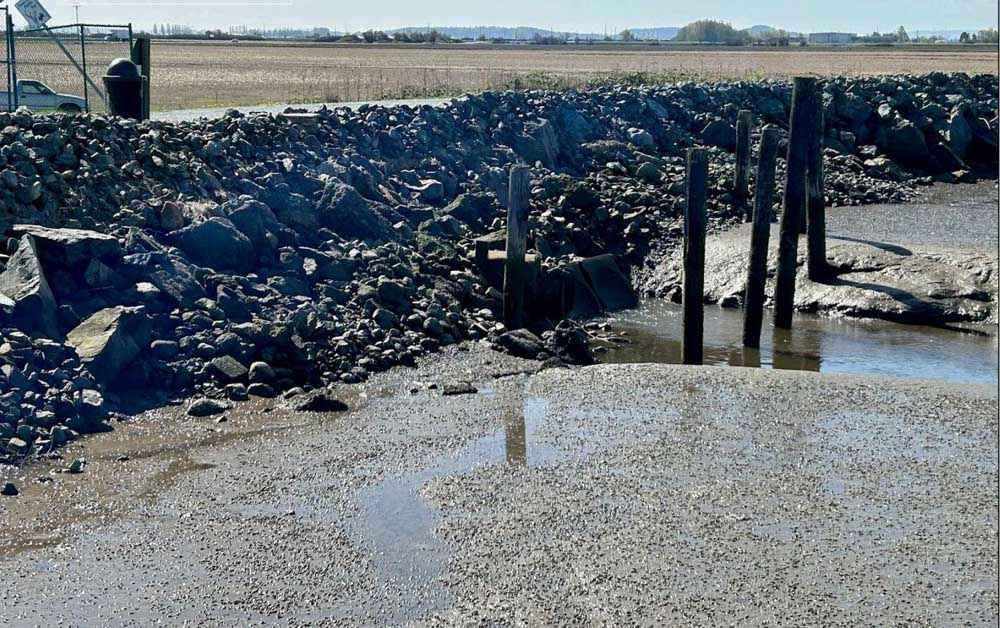Tide gate protecting farmland jeopardizes salmon, killer whales
Published 11:17 pm Saturday, August 24, 2024

- The National Marine Fisheries Service has denied permission to a county drainage district in Washington state to repair a tide gate that protects farmland from being flooded by saltwater.
The National Marine Fisheries Service has blocked a drainage district from replacing a failing tide gate that keeps saltwater from flooding about 400 acres of farmland in Skagit County, Washington.
The federal agency’s West Coast administrator Jennifer Quan said in a letter to the U.S. Army Corps of Engineers that repairing the gate would jeopardize the existence of Puget Sound Chinook salmon and killer whales, which eat the salmon.
Repairs will extend the tide gate’s use by 50 years and prevent Skagit Delta farmland from becoming fish habitat, according to the National Marine Fisheries Service. The agency said the district’s concerns about losing farmland was “not relevant.”
Skagit County Dike, Drainage and Irrigation District 12 has sued the National Marine Fisheries Service in U.S. District Court for Western Washington to challenge the decision. The suit alleges the agency overstated the project’s impact.
“I just don’t think they did any site-specific analysis,” Skagit County Drainage and Irrigation Districts Consortium executive director Jenna Friebel said. “I think they just wanted to oppose the project.”
The consortium represents a dozen dike and drainage districts that protect the low-lying and fertile delta about 60 miles north of Seattle. Tide gates open to let out water and close to keep out salty Puget Sound tides.
District 12 protects about 10,000 acres of farmland. A gate that Friebel said protects about 400 acres was damaged in 2019. The tide gate is now “on the verge of total collapse,” district operations manager Stephen Lefeber said in a court declaration.
Because Puget Sound Chinook salmon and killer whales are protected by the Endangered Species Act, the Army Corps, which must issue the district a permit, consulted with the National Marine Fisheries Service.
The agency issued a biological opinion in April finding the repaired tide gate would jeopardize the survival of Chinook salmon and killer whales throughout Puget Sound.
Repairing the tide gate would allow habitat to continue to be managed for agriculture and appreciably reduce the likelihood of recovery and survival of Chinook salmon and killer whales, according to the National Marine Fisheries Service.
In response to comments from the drainage district, the agency said the land’s current agricultural use was not relevant to its analysis.
“In terms of farmland being relevant, the point is simply that the ESA maintains a level playing field and holds different land uses to consistent standards,” National Marine Fisheries Service spokesman Michael Milstein said in an email.
As required, the agency offered “renewable and prudent alternatives.” To make up for repairing the tide gate, the district could turn 8.6 acres somewhere in the area into fish habitat or fund a restoration project.
“This biological opinion outlined reasonable and prudent alternatives that would reduce the impacts of replacing the tide gate to the point where the remaining impacts would be exempted as incidental take,” Milstein said.
The drainage district estimates the alternatives would cost $3 million to $5 million. The district, which also maintains dikes for flood protection, has a drainage budget of $100,000 a year, Friebel said.
Other Skagit County drainage districts would be in the same position if required to undertake multimillion-dollar restoration programs to maintain tide gates, she said.
“It’s the end of them,” Friebel said. “They can’t mitigate at that level.”




